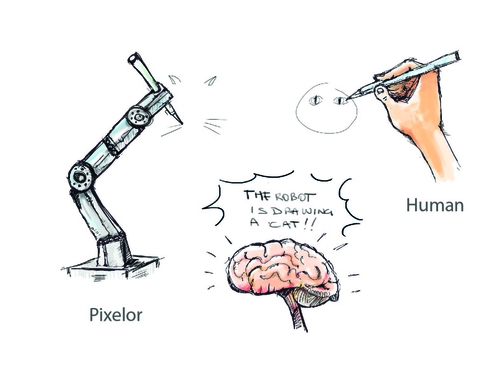Pre-recorded Sessions: From 4 December 2020 | Live Sessions: 10 – 13 December 2020
4 – 13 December 2020
Pre-recorded Sessions: From 4 December 2020 | Live Sessions: 10 – 13 December 2020
4 – 13 December 2020
#SIGGRAPHAsia | #SIGGRAPHAsia2020
#SIGGRAPHAsia | #SIGGRAPHAsia2020











Date/Time:
04 – 13 December 2020
All presentations are available in the virtual platform on-demand.
Lecturer(s):
Tao Xiang, University of Surrey, United Kingdom
Yulia Gryaditskaya, CVSSP, University of Surrey, United Kingdom
Yi-Zhe Song, University of Surrey, United Kingdom
Ayan Kumar Bhunia, University of Surrey, United Kingdom
Ayan Das, University of Surrey, United Kingdom
Umar Riaz Muhammad, CVSSP, University of Surrey, United Kingdom
Yongxin Yang, University of Surrey, United Kingdom
Timothy Hospedales, University of Edinburgh, United Kingdom
Bio:
Description: We present the first competitive drawing agent Pixelor that exhibits human-level performance at a Pictionary-like sketching game, where the participant whose sketch is recognized first is a winner. Our AI agent can autonomously sketch a given visual concept, and achieve a recognizable rendition as quickly or faster than a human competitor. The key to victory for the agent is to learn the optimal stroke sequencing strategies that generate the most recognizable and distinguishable strokes first. Training Pixelor is done in two steps. First, we infer the optimal stroke order that maximizes early recognizability of human training sketches. Second, this order is used to supervise the training of a sequence-to-sequence stroke generator. Our key technical contributions are a tractable search of the exponential space of orderings using neural sorting; and an improved Seq2Seq Wasserstein (S2S-WAE) generator that uses an optimal-transport loss to accommodate the multi-modal nature of the optimal stroke distribution. Our analysis shows that Pixelor is better than the human players of the Quick, Draw! game, under both AI and human judging of early recognition. To analyze the impact of human competitors’ strategies, we conducted a further human study with participants being given unlimited thinking time and training in early recognizability by feedback from an AI judge. The study shows that humans do gradually improve their strategies with training, but overall Pixelor still matches human performance. We will release the code and the dataset, optimized for the task of early recognition, upon acceptance.
